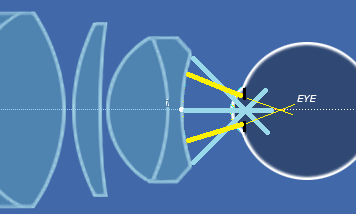Do you still get blackouts with them? Perphaps I returned them to hastily. The sample I had was supposed to be "like new" but it reeked of fags and it was burnt in one place. I wonder if I could get views with no blackouts if I tried again.
The simple answer is yes, to a degree, but for the most part I am able to manage them sufficiently to really enjoy them. It is only a side by side comparison, or when I switch between the Noctivid and a more 'friendly' 8x42 that I become aware of it and a little irritated by it. The 10x Nocs I find more forgiving, in terms of blackouts.
I can't remember if you wear glasses while using binoculars, or not, but when I've passed my Nocs to non glasses wearers to try, they have invariably experienced some difficulties with blackouts, more so than those who do wear glasses. Of course, there are some big fans of the Nocs on here who don't wear glasses, so...
I think you just need to try them again and see if 'the view' is a sufficient trade off for any necessary compromises in 'viewing comfort'. Certainly the copy you had sounded very unpleasant, no wonder you returned them, regardless of their characteristics in use. But, have some 8x42's which you find really comfortable to use to compare them with side by side, so that you can evaluate any trade off/compromises the characteristics of the Nocs might require.
The day I took the decision to go and potentially purchase a pair of 8x42 Nocs (based entirely on my experiences with my 10x Nocs) the dealer had just taken in a pair of used 8x40 'Retrovids'. He handed them to me to test and get my opinion on them, alongside his 8x42 Noctivid display/demo copy. By the time he'd finished dealing with the customer who was already in the shop when I arrived, trying to choose between different formats of NL's (eventually choosing 8x42's for their calmer view over the 10x42's which he felt were better balanced in the hands), I knew I wasn't going to buy the 8x42 Nocs, because I'd bonded with the 8x40 'Retrovids' immediately and was enjoying them so much more. I struck an excellent deal for the Retrovids and returned home very happy. I have, of course, subsequently purchased a pair of 8x42 Nocs too (green edition), at the second attempt.
Not sure if any of that helps, but despite the relatively negative reporting I've made above, I do genuinely love using my 8x42 Noctivid, it's just not quite as easy/comfortable in use as some, so needs to be tested carefully before purchase, to ensure any trade-offs required are acceptable to you. 🙂
James








